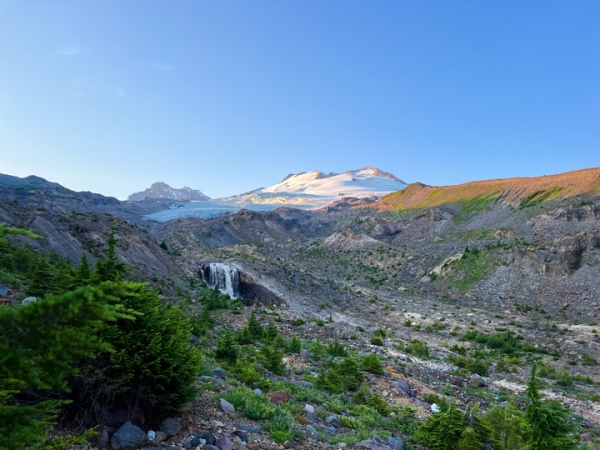Around 12,000 years ago, the most recent ice age had ended, Earth’s climate warmed, and glaciers shrank back. Since then, glaciers have advanced and retreated many times, driven in part by changes in the climate. Today, many alpine glaciers are in rapid retreat, but it’s not because of ice age cycles. This round of melting is likely being caused by human activities.
On a warm morning in August 2024, glaciologist Mauri Pelto stood below the Easton Glacier on the flanks of Mount Baker in northern Washington. This spot was covered by ice in 1990, down to about the orange tent in the photo above, but now the glacier sits well uphill, glimmering brightly in the distance. “These glaciers have advanced and retreated quite a few times in the past 5,000 years,” he said. “It’s not just one progression backwards.”
The most recent peak extent of the Easton Glacier was around 1850 during a period of regional cooling that caused glaciers in North America and Europe to grow. This event is often called the “Little Ice Age,” though it was not a true ice age because it wasn’t a global occurrence; it involved episodes of both warming and cooling, and it was comparatively short. Since then, the Easton Glacier has acted somewhat like a yo-yo, advancing down the valley during cooler periods, then melting back to higher elevations during warmer times. Even a relatively short-term climate swing on the order of tens of years can cause the glacier to change its size.
Read more at NASA Earth Observatory
Photo Credit: Karin Kirk, NASA’s Jet Propulsion Laboratory
Sci/Tech Climate Top Stories
